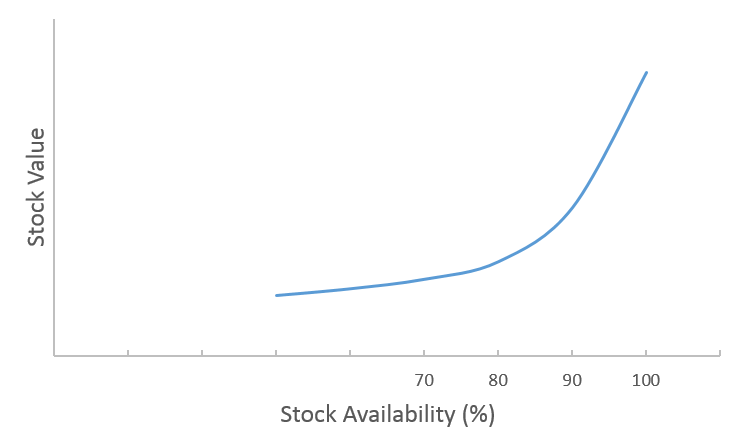One of the most established assumptions in inventory management is that stock holding needs to rise steeply as you increase availability. An illustrative graph, much like the example below, can be found in almost every textbook covering inventory management.

This concept is theoretically true for a single item where sales are conforming beautifully to a normal statistical distribution. The big question in inventory management theory is to find the trade spot on the curve.
However, in real life retailing and wholesaling the theory doesn’t hold true. To me, it is like saying a football team with a good offensive lineup cannot also have a good defense. In fact several studies have found a significant reverse correlation between availability and stock holding, e.g. in Alfred Angerer’s paper on “The impact of Automatic Store Replenishment Systems on Retail”.
The reality is that companies who are able to maintain good availability in an environment with thousands of SKUs normally have their act together. Good tools and processes that can help maintain a manageably high level of availability can also help drive down stock and shrinkage. The sports analogy holds; a good defense helps support the forwards and vice versa. We’ve seen this precise effect in case after case when we’ve implemented our solution for customers.
When you add categories for your SKUs reflecting their importance to your commercial plan and assortment, you can focus most on ensuring a buffer for the lines that matter most and drive down overall stock quite aggressively.
The biggest lesson in this: question all authority. No expert, no established principle should go unchallenged. I always argue it’s really important to know and understand the assumptions underpinning even the most common theorems’, so you can apply your own judgment and decide when they hold true and when they don’t.



